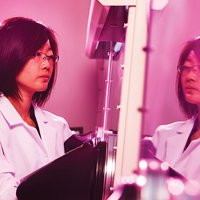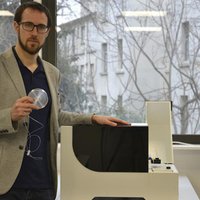"Pineapple plantations must be renewed every two years in order for the farmer to continue harvesting this fruit, and the stubble is usually treated with herbicides and pesticides before being burned where they stand in the fields. To reduce the environmental impact of this practice and increase profitable pineapple production, the Costa Rican Esteban Bermúdez wants to breathe new life into these byproducts. He has designed a residual biomass utilization system which spans the complete value chain, from cultivation to the commercialization of recycled products. Thanks to his idea, Bermúdez has been selected as one of MIT Technology Review, Spanish Edition´s Innovators Under 35 Central America 2016.
An expert in renewable energy, Bermúdez is the cofounder of the advisory and consultancy firm ESCOIA. Since 2014, this young innovator has worked with his partner, Bjørn Utgård, to perfect the utilization of pineapple stubble. Together, they visited plantations in Costa Rica to learn about their processes and they analyzed the composition of the stubble to explore different applications, such as biogas, fertilizer or textile fibers. Later, they found the most appropriate machinery for pretreating the biomass, capable of reducing the humidity of the stubble from 86% to 60%, according to Bermúdez.
Afterwards, the biomass could be fed into a combined cycle plant or continue to dry out but with a lower energy demand. Although his project is still in the proof of concept stage, Bermúdez´s objective is to achieve a circular usage of the resource through which the energy generated would serve to power the treatment of new supplies of biomass. He also hopes to obtain in future further derived products in addition to the energy generated.
Bermúdez plans to build a pilot plant in 2017 to scale the technology and ""find the best option for utilizing the biomass,"" something for which he indicates he is already ""negotiating"". If his forecasts are realized, he will have a commercial offering by 2018. In his opinion, the potential of the pineapple is enormous since it is cultivated practically year-round. The young innovator highlights: ""We are talking about an energy availability comparable to geothermal power.""
But to achieve this ambitious objective, he will first have to convince producers and companies. The innovator points out that his country has a habit of waiting for another company to act first. ""What [we] have not internalized very well is that Costa Rica is one of the leading producers of pineapple worldwide,"" he says. Hence he proposes to ""lead by example instead of looking for solutions in other areas of the world.""
In the opinion of the director of the Biofuel Unit at the Energy, Environmental and Technological Research Center of Spain and jury member for the Innovators Under 35 Central America 2016 awards, Mercedes Ballesteros, ""this project is innovative because, although the proposed process has been used commercially to treat wood byproducts, its application to pineapple cultivation waste products is novel."""




